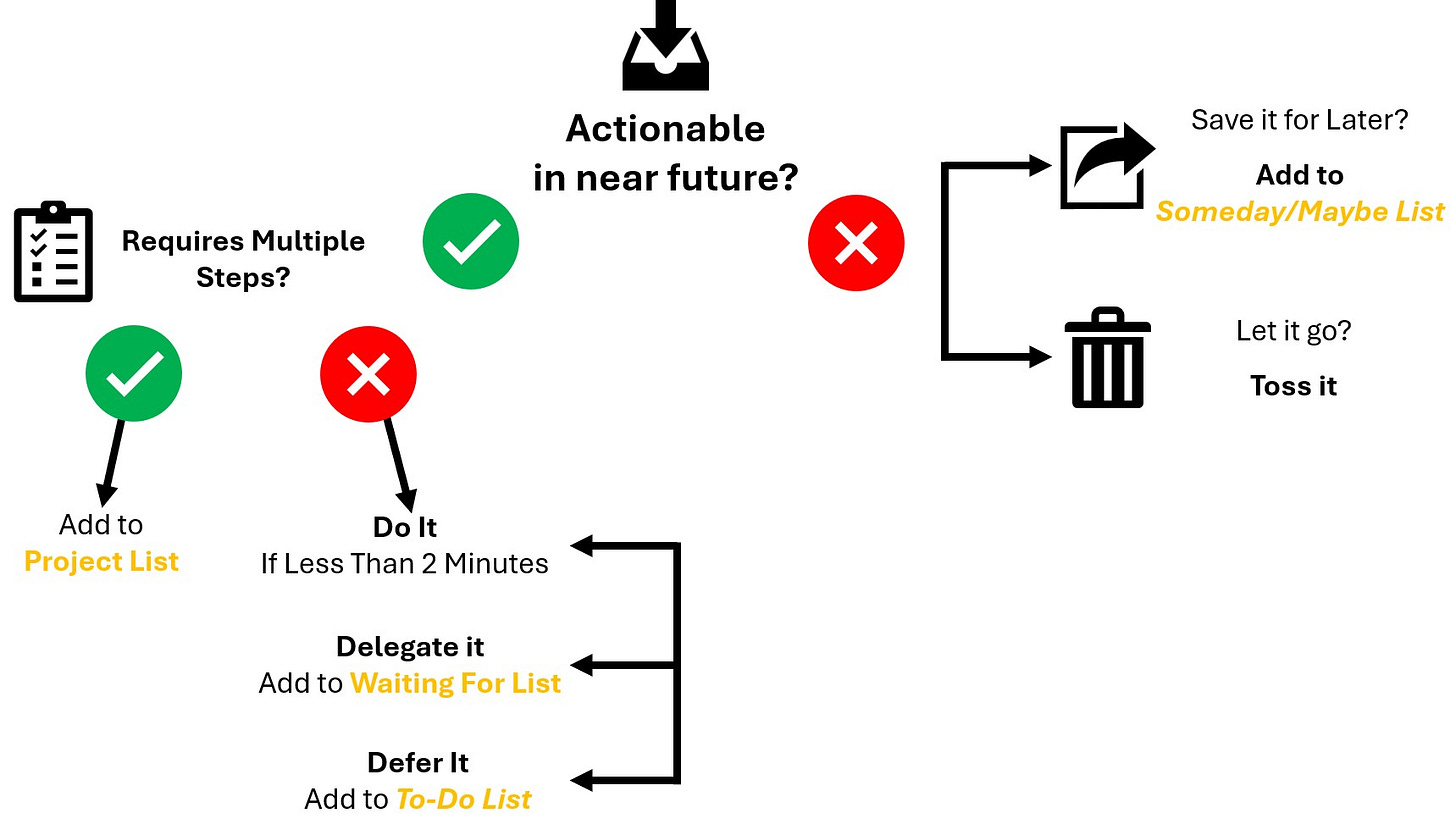From Mind Sweep to Meaningful Action
How to process your mental clutter and make clear decisions.
Last week, I shared how to do a Mind Sweep — a simple practice to unload the backlog of ideas, reminders, and half-formed to-dos swirling around in your brain.
Doing this kind of mental offload brings surprising clarity. It's like clearing fog from a windshield you didn’t even know was foggy.
But writing everything down is just Step One.
Like dumping the contents of a cluttered closet onto your floor, it’s cathartic, but now you’re surrounded by piles of stuff. Some useful, some meaningless. What matters now is what you do next.
Step Two: Processing
This is where the real work and value begin.
Offloading thoughts onto paper doesn't make the tasks go away. You still need to decide what each item means and, more importantly, what you’re going to do about it.
This is where decision fatigue kicks in. It's why most people stall here. But with a framework, it's manageable.
The Framework
David Allen’s Getting Things Done method provides a clear, repeatable structure to help you efficiently process each item from your Mind Sweep.
I’ve used it for over a decade, and it remains the most effective system I’ve found. Here’s the core workflow:
Start With This Question:
“Is this item Actionable in the near future?”
You get to define “near future.” For some, it’s this week. For others, this quarter.
If it’s NOT actionable:
Save it for later? → Add it to your Someday/Maybe list (a list you review occasionally).
Let it go? → Toss it. Not every idea deserves your time or attention.
Example: This newsletter lived on my Someday/Maybe list for over two years before I finally decided to start writing.
If it IS actionable:
“This is where the fun begins.” – Anakin Skywalker
You have two quick decisions to make:
Is it a Project?
If it requires multiple steps, add it to your Projects List.
Example: “Complete performance reviews” might involve pulling data, writing comments, and scheduling meetings.
Is it a Single Action?
Then you have 3 options:
1. Do It
Only if it takes less than 2 minutes.
2. Delegate It
Assign it to someone better suited to complete the task, and track it on a Waiting For list so you remember to follow up.
3. Defer It
Add it to your To Do list and schedule time to complete it.
What to Expect
Processing your Mind Sweep list is the hardest part of the system, but it’s also the most impactful.
Why? Because once you’ve clearly defined everything you need to do, you gain the freedom to choose what you should do, and peace of mind from what you’re intentionally saying no to.
That clarity helps you be fully present — whether you’re preparing for a pitch, having dinner with your family, or watching the latest Netflix series without guilt.
Call to Action
Take 15–20 minutes today to process 5–10 items from your Mind Sweep list. Follow the flow:
Is it actionable?
What’s the next step?
Where does it belong?
Reply to this email (or leave a comment if you’re reading this online) and let me know:
What surprised you? What was hardest? What felt like progress?
Next Week
We’ve talked a lot about lists — To Do, Projects, Waiting For, Someday/Maybe. Next week, I’ll show you the exact lists I keep, why I use them, and where I keep them.




